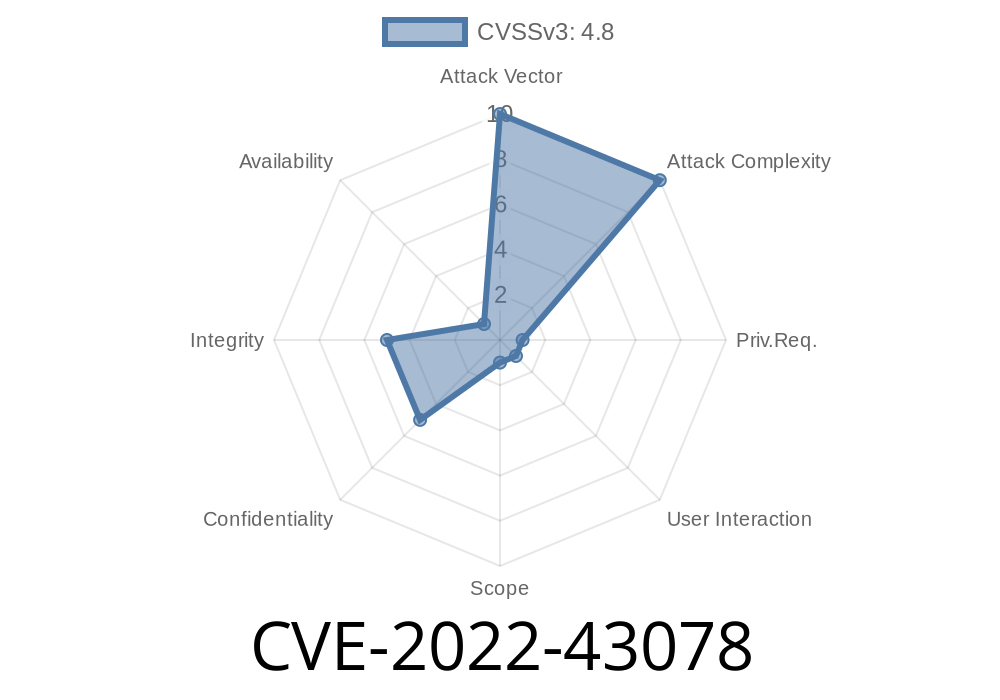In the world of web application security, Cross-Site Scripting (XSS) is a major concern and a well-known vulnerability that affects many web applications. In this post, we are going to explore a recently discovered XSS vulnerability, identified as CVE-2022-43078, which exists in the Web-Based Student Clearance System v1.. In particular, we will dive into what the vulnerability is, how attackers can exploit it, and what you can do as a system administrator or developer to mitigate this threat. We will also provide code snippets to help illustrate the exploit and some links to the original references for further reading.
The Vulnerability: Cross-Site Scripting (XSS)
CVE-2022-43078 refers to a Cross-Site Scripting vulnerability that exists in Web-Based Student Clearance System v1., specifically within the /admin/add-fee.php file. This vulnerability allows attackers to execute arbitrary web scripts or HTML code on a user's browser by injecting a specially crafted payload into the cmddept parameter of the affected file.
Exploit Details
An attacker can exploit this vulnerability by crafting a malicious payload, which typically consists of JavaScript code, and appending it to the cmddept parameter within the affected file. Once this crafted payload is executed, it can compromise the user's session, giving the attacker complete control over the account, as well as the ability to steal sensitive information, redirect users to other malicious websites, or perform other nefarious actions.
To exploit this vulnerability, an attacker can craft a malicious URL like the following
http://example.com/admin/add-fee.php?cmddept=<script>alert('XSS')</script>;
The above URL contains a simple JavaScript code within the script tags that will display an alert with the message "XSS" when executed.
Original References
This vulnerability was initially reported and analyzed by security researchers who have documented their findings and provided relevant information that can be found at the following links:
1. CVE Details
2. Exploit Database
3. National Vulnerability Database (NVD)
Mitigating the Threat
As a system administrator or developer, it is essential to take necessary precautions to protect your web applications from these types of attacks. The following are some simple steps that can help to mitigate this specific XSS vulnerability:
1. Update your software: If the developer of the affected application has provided a patch or update to fix this vulnerability, it is critical to apply the update immediately.
2. Validate user input: Implement server-side input validation and sanitization for all user inputs, ensuring that any malicious payloads are stripped or neutralized before being stored or processed.
3. Implement Content Security Policy (CSP): Implement a robust Content Security Policy to restrict the sources from which scripts and other content can be loaded, thus preventing the execution of malicious payloads.
4. Use proper output encoding: Ensure that all user-generated content is encoded correctly when displayed on the web application to prevent the execution of malicious scripts.
5. Educate users: Inform your users about the risks of clicking on unknown or suspicious links, and encourage them to report any suspicious activities they encounter.
Conclusion
Cross-Site Scripting vulnerabilities like CVE-2022-43078 are a significant concern in today's web application landscape. By implementing the appropriate security measures and keeping your software up-to-date, you can greatly reduce the risk of these types of attacks and protect your users and your organization from potential harm.
Timeline
Published on: 11/01/2022 14:15:00 UTC
Last modified on: 11/01/2022 22:43:00 UTC
